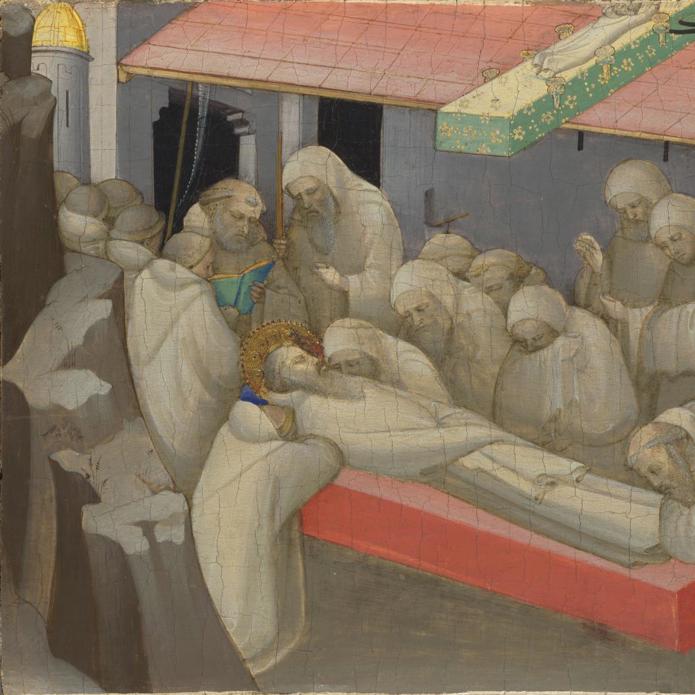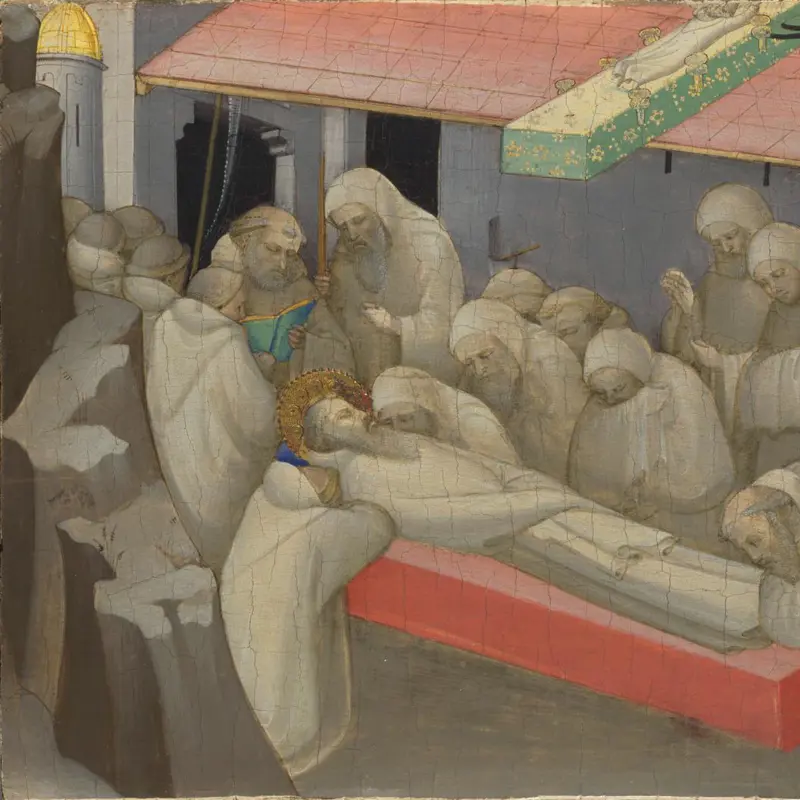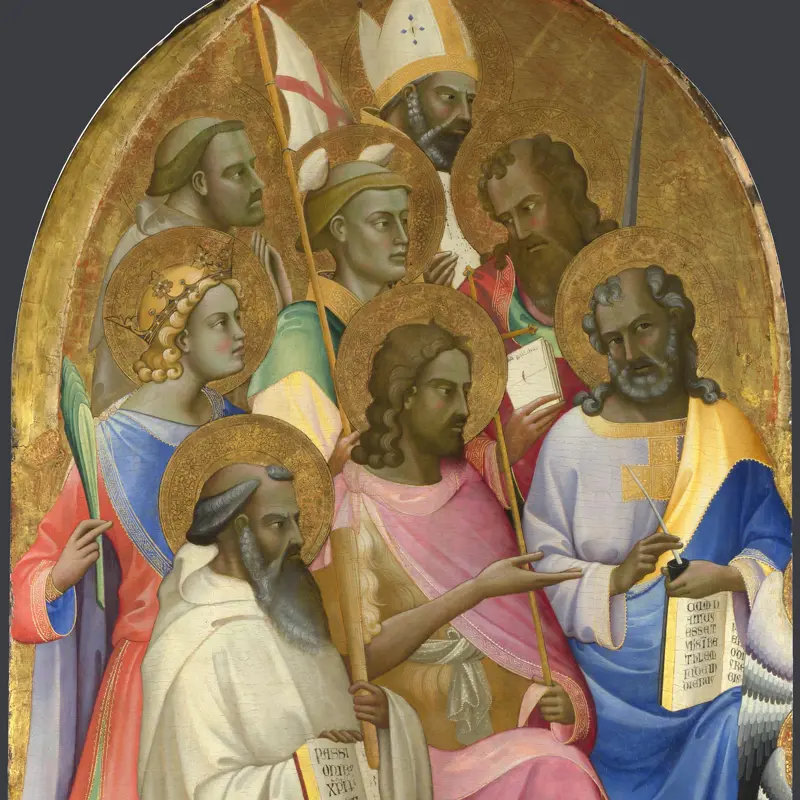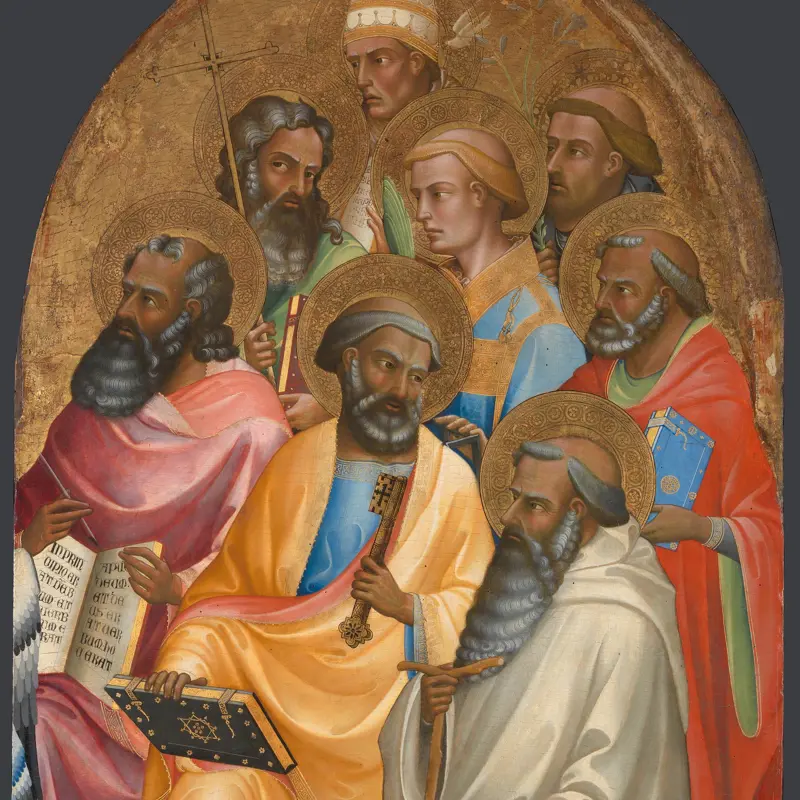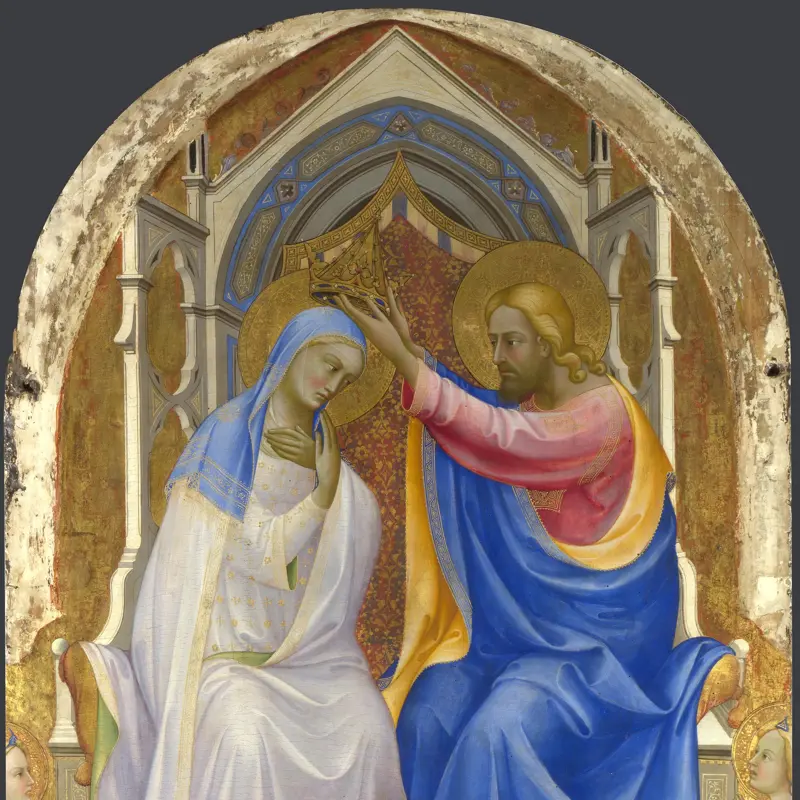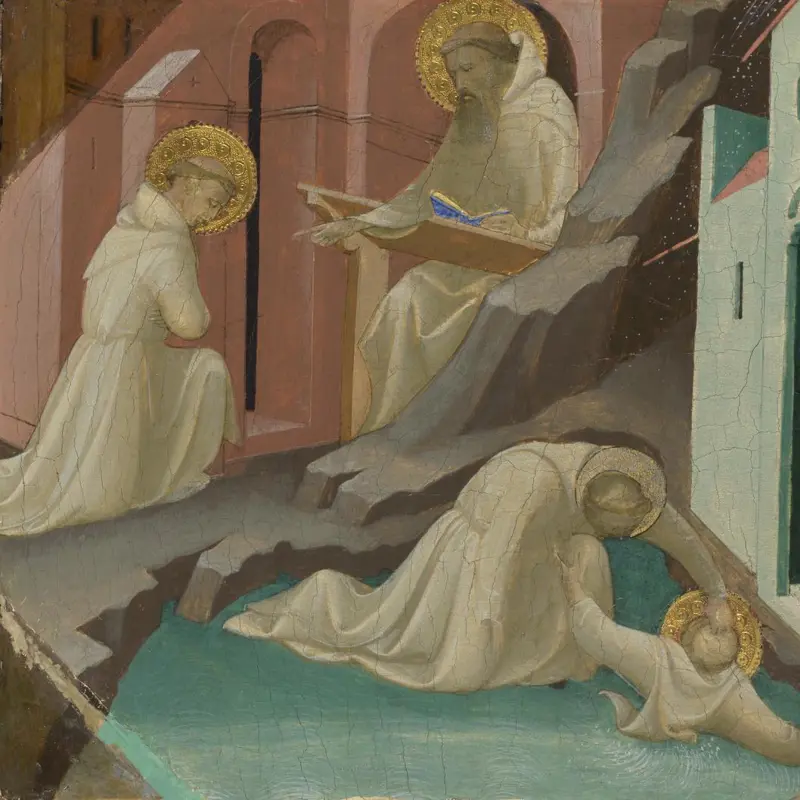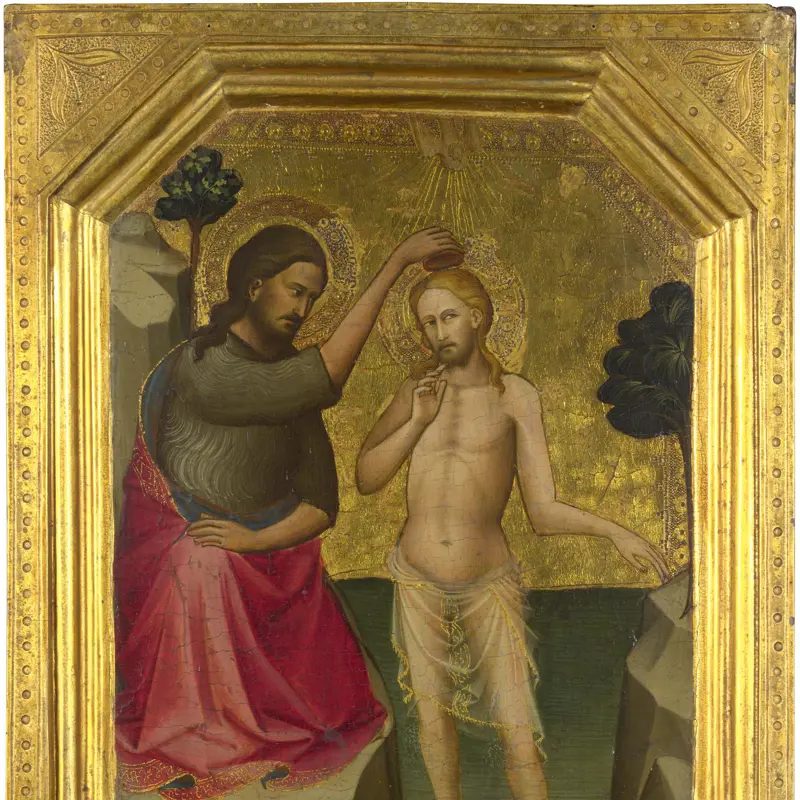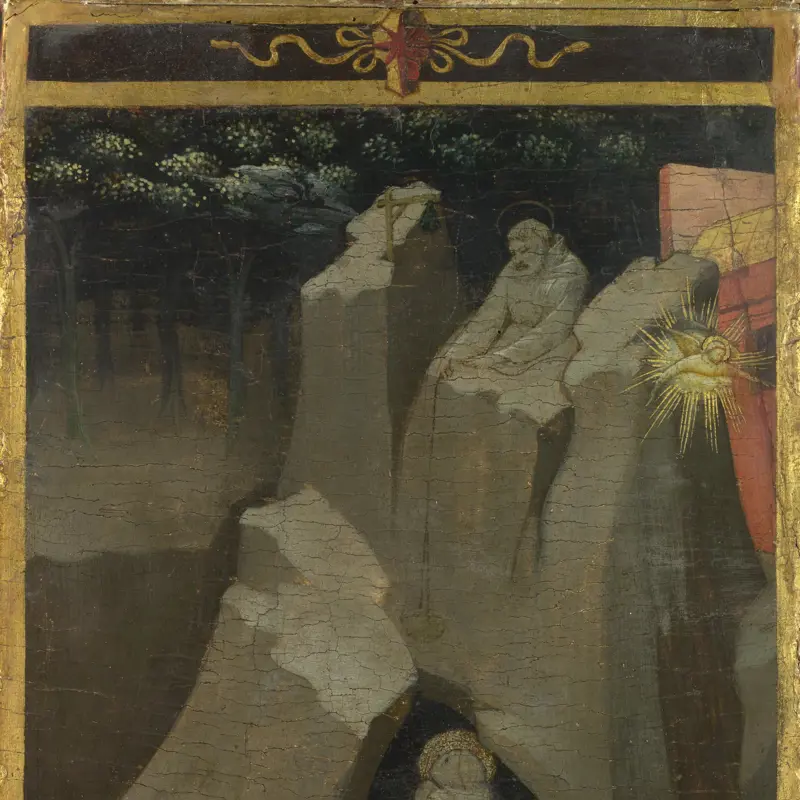Lorenzo Monaco, 'Incidents in the Life of Saint Benedict', 1407-9
About the work
Overview
In this painting, we see two stories from the life of Saint Benedict happening at once. On the left Benedict tells Saint Maurus to rescue Saint Placidus, who has fallen in the lake while fetching water. Maurus walks out on to the lake as if it were land and pulls Placidus – still grasping his jug – out by the hair. On the right Benedict visits his sister, Saint Scholastica. When he refuses her invitation to stay the night, she prays for him to remain and a miraculous rainstorm prevents him leaving; you can see the rain lashing the roof.
This panel comes from the predella, or bottom tier, of a large altarpiece painted for San Benedetto fuori della Porta Pinti, just outside Florence. It emphasises not just Benedict but the role of his followers, especially youthful monks, and the power of prayer – very suitable for the monks of San Benedetto.
Key facts
Details
- Full title
- Incidents in the Life of Saint Benedict: Predella Panel
- Artist
- Lorenzo Monaco
- Artist dates
- Active 1399; died 1423 or 1424
- Part of the series
- San Benedetto Altarpiece
- Date made
- 1407-9
- Medium and support
- Egg tempera on wood (probably poplar)
- Dimensions
- 28.4 × 52 cm
- Acquisition credit
- Bought, 1925
- Inventory number
- NG4062
- Location
- Room 57
- Collection
- Main Collection
- Frame
- 20th-century Replica Frame
Provenance
Additional information
Text extracted from the ‘Provenance’ section of the catalogue entry in Dillian Gordon, ‘National Gallery Catalogues: The Fifteenth Century Italian Paintings’, vol. 1, London 2003; for further information, see the full catalogue entry.
Bibliography
-
1951Davies, Martin, National Gallery Catalogues: The Earlier Italian Schools, London 1951
-
1986Davies, Martin, National Gallery Catalogues: The Earlier Italian Schools, revised edn, London 1986
-
2001
C. Baker and T. Henry, The National Gallery: Complete Illustrated Catalogue, London 2001
-
2003Gordon, Dillian, National Gallery Catalogues: The Fifteenth Century Italian Paintings, 1, London 2003
Frame
Made in 2012, this replica frame was inspired by fifteenth-century Italian moulding. It is meticulously crafted from poplar wood and water-gilt. The panel by Monaco originally formed part of the predella at the base of the S. Benedetto Altarpiece, located near Florence. The replica frame covers the corners on the left-hand side of the panel, where the decorative divisions on the predella would have been. This indicates that this panel was originally positioned on the right-hand side.
About this record
If you know more about this work or have spotted an error, please contact us. Please note that exhibition histories are listed from 2009 onwards. Bibliographies may not be complete; more comprehensive information is available in the National Gallery Library.
Images
About the series: San Benedetto Altarpiece
Overview
A glorious, glowing, multi-coloured company of saints and angels surround Christ and his mother as he delicately places a golden crown on her head, making her Queen of Heaven. This huge polyptych (multi-panelled altarpiece) was painted for the high altar of the monastery of San Benedetto fuori della Porta Pinti in Florence. It was originally even bigger: its main panels are in the National Gallery, but other parts are scattered in collections across the world.
The Camaldolites (a religious order founded in 1012) were famous for their strict lifestyle, although they lived among great visual riches. The monastery’s register records how it was commissioned by a Florentine citizen, Luca Pieri Rinieri Berri, who was to pay almost the entire cost. In recompense his name was painted on the altarpiece – a few letters can be made out on the grey step of dais – so that he would be remembered in the monks' prayers.

